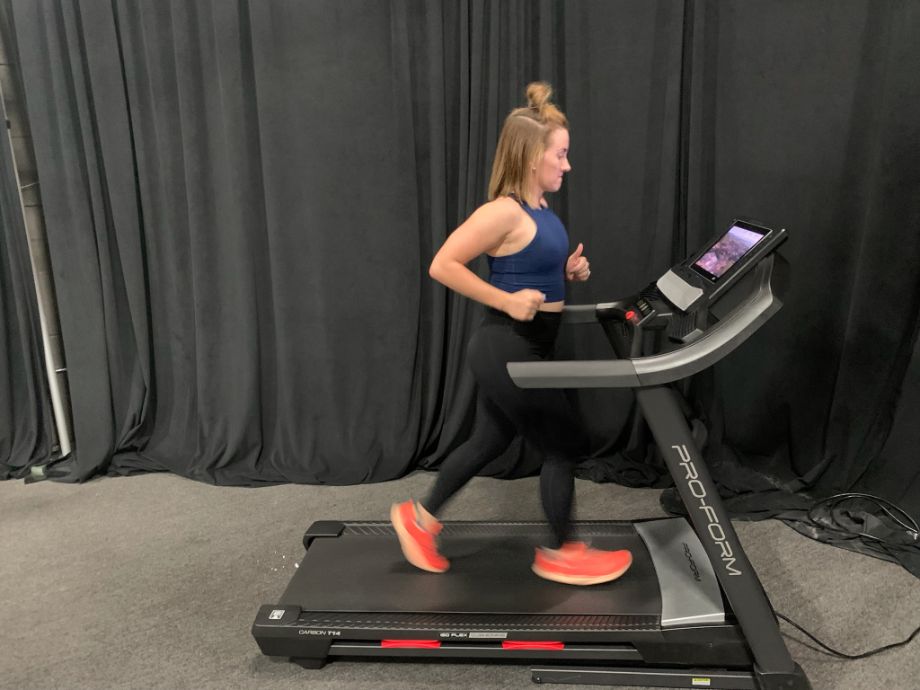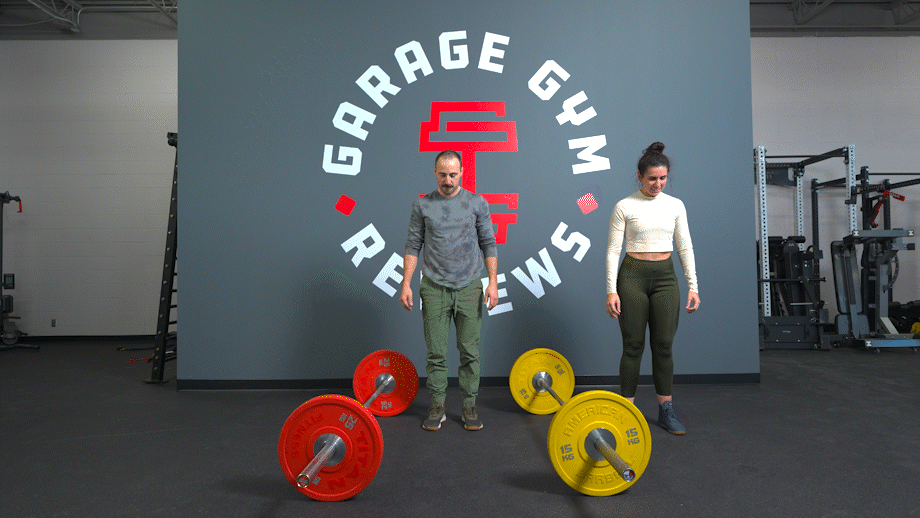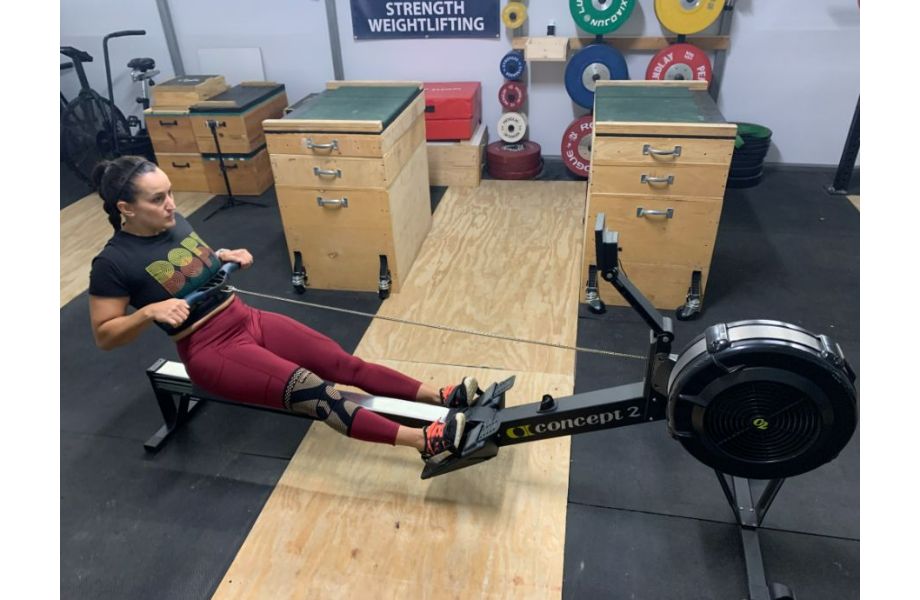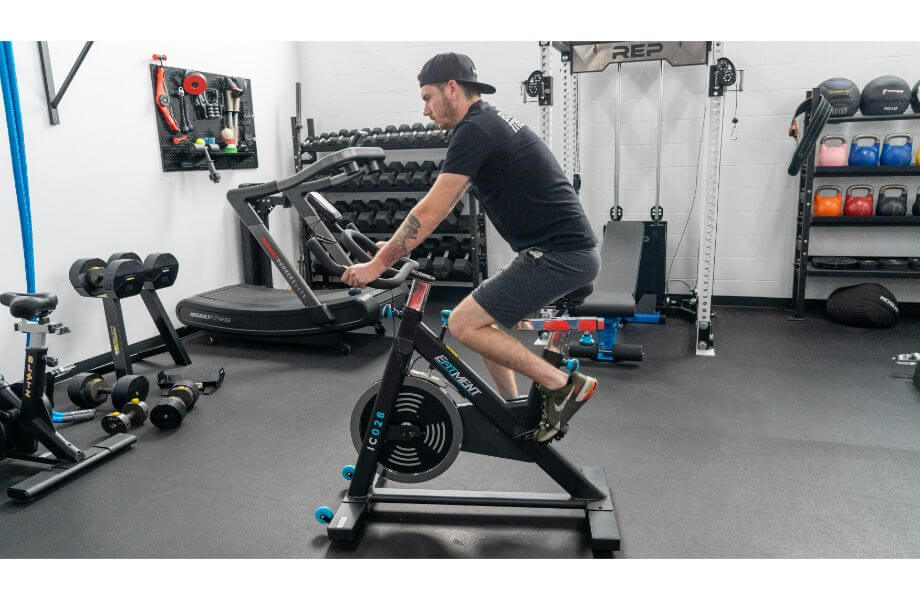We test and review fitness products based on an independent, multi-point methodology. If you use our links to purchase something, we may earn a commission. Read our disclosures.
Blood pressure is a common metric used to check your heart health. Your blood pressure consists of your systolic pressure (first number), which is the pressure/force created when the heart pumps blood to the rest of the body, and your diastolic pressure (second number), the pressure created when the heart rests between beats. High blood pressure, known as hypertension, has a genetic factor, as it can run in families. You can also develop high blood pressure as you age or as a result of lifestyle choices. Without intervention, high blood pressure can increase your risk of heart attack, heart disease, and other illnesses related to the heart and circulatory system.
Exercise is one of the first prescriptions for high blood pressure, but does cardio lower blood pressure? The answer, which is supported by numerous studies that I’ll touch on shortly, is yes.
Incorporating regular cardio sessions into your training schedule can help bring your blood pressure levels down. Keep in mind that the benefits of regular exercise are magnified when you include a heart-healthy diet, stress management and other blood pressure-reducing lifestyle changes as recommended by the American Heart Association.1
Relationship Between Exercise and Blood Pressure
When you exercise, blood flow increases to meet the metabolic needs of your muscles. Typically, exercise and the associated increased blood flow cause a rise in your systolic blood pressure, while diastolic blood pressure can stay the same or drop slightly.2 A 2016 study3 conducted among Indians, a population with a growing number of people with high blood pressure, found that exercise reduced systolic blood pressure by 5.00 mmHg (millimeters of mercury) and diastolic blood pressure by 3.09 mmHg.
The patterns in blood pressure depend on the nature of the activity, time of day, what you’ve eaten, how rested you are, and many other factors. For example, a 2017 review2 found that if you suddenly sprint, the effects on your blood pressure will be different than if you gradually increase your speed over a long period of time or distance.
A 2013 meta-analysis4 that included results from 5,223 participants from 93 studies found that endurance training, a type of cardio training, and resistance training can both lower blood pressure. Endurance training showed a marginally higher decrease than resistance training. This same analysis found that exercise intensity makes a difference in the amount of blood pressure improvement, too. Results suggested that low-intensity exercise decreases blood pressure but not as much as moderate and vigorous-intensity exercise.

Why does your blood pressure decrease when you regularly exercise? It comes down to blood vessels and arterial rigidity. Age, lifestyle, and genetic factors can cause blood vessels and arteries to lose flexibility and become more rigid.5 Rigidity increases the pressure put on the blood vessels with each heartbeat. Exercise keeps the arteries and blood vessels flexible.
A relatively short period of exercise was enough to reduce arterial stiffness and improve blood press in older adults in an older 2009 study.6 A 2014 study7 found evidence that exercise improved arterial rigidity among obese and sedentary young adults. A more recent 2018 systematic review and meta-analysis8 found a pattern of reduced blood pressure (and waist circumference) among adults who regularly participated in exercise, including cardio workouts.8
However, these same studies and the review also suggest that the effects of exercise vary based on certain risk factors, such as gender, weight, genetics, stress levels and diet. Consequently, exercise alone isn’t the answer to all of your blood pressure problems.
Look at exercise as part of developing a healthy lifestyle because it can help with other factors that affect blood pressure. For example, if you’re overweight, weight loss can improve blood pressure, and exercise is key to maintaining a healthy weight and lowering cholesterol. You’ll see more success when you use exercise as part of an overall plan and not the only way to lower your blood pressure.
How Much Exercise Do I Need?
Health guidelines from the Centers for Disease Control and Prevention (CDC) recommend 150 minutes per week9 of moderate-intensity activity (aka cardio) and at least two days a week of strength or weight training to maintain your current weight. If you’re coming from a lifestyle that’s predominantly sedentary, the first step is to aim for 150 minutes of moderate-intensity cardio per week. You could achieve that goal with brisk walking for 30 minutes five days a week.
Don’t get down on yourself if 30 minutes is currently out of your reach. Start with five or 10 minutes if that’s all you can do. Be patient and gradually increase your exercise time until you can sustain 30 minutes of moderate activity.
The previously mentioned 2013 meta-analysis found that training frequency and the length of time exercised didn’t significantly increase or decrease the change in blood pressure. Consistency over time brought the best results, but blood pressure can decrease even after a single bout of exercise, according to a 2016 review.10
That same 2013 meta-analysis found that low-intensity exercise had a smaller effect on blood pressure than moderate to vigorous-intensity exercise. Moderate-intensity exercise should put your heart rate at 64 to 73 percent of maximum, according to the CDC, or an exertion level that makes breathing harder with light sweating but lets you carry on a conversation.11 Vigorous-intensity exercise puts your heart rate at 77 to 93 percent of your maximum heart rate.

If you’re looking to maximize your exercise time, a 2019 systematic review and meta-analysis compared high-intensity interval training (HIIT)12 to moderate-intensity exercise and found that HIIT produced greater benefits to blood pressure. If you take your effort level up a notch to fall between moderate to vigorous intensity, even in short bursts during your workout, you should ultimately see a more dramatic change in your blood pressure. As a frame of reference, vigorous-intensity cardio workouts should leave you able to speak in one or two-word sentences.
When we’re talking about blood pressure, more isn’t always better. The 2013 meta-analysis found a sweet spot when people stayed under 210 minutes per week and kept their training sessions to 30 to 45 minutes. Exercising beyond that amount did not significantly decrease blood pressure.
It’s worth noting that the 2013 meta-analysis compared endurance training (cardio) to dynamic resistance training and isometric resistance training. All forms of exercise improved blood pressure, but cardio showed the most benefits even over training plans that combined training types.
That doesn’t mean you shouldn’t include resistance/strength training in your workout because your blood pressure isn’t the only health factor to consider. Strength training protects bone health, helps maintain weight, and prevents illnesses like osteoporosis.13
Types of Cardio to Consider
Some of the more common types of cardio include:
- Brisk walking
- Running
- Swimming
- Cycling
- Stair stepper
- Elliptical
Start your exercise sessions with a short five- to 10-minute warm-up and end with a cool down of about the same time. This lets your body slowly start moving and decreasing activity without increasing stress.
For those trying to develop a new habit of exercising regularly, start with something simple and easy to access. That could mean taking an evening walk for 30 minutes every day. If you’ve got a gym membership, try out different cardio machines to find your favorites.

Keep things interesting. Skip cardio that you hate and find types you love (or is at least easier to tolerate). Take a class, subscribe to a fitness app, or find YouTube videos of alternative forms of cardio like kickboxing, dance, pilates or power yoga (a type of yoga that can be a cardio workout). Get friends and family involved to give yourself some accountability and company.
Consult a Medical Professional
You may need to consult a medical professional before starting an exercise program. Those who have underlying conditions like hypertension, diabetes, osteoporosis, and other illnesses that may affect your ability to do certain types of cardio should talk to their doctor for recommendations and potential limitations. Depending on your treatment plan, like taking blood pressure medications or other medications that can affect your energy levels, you might need to alter your exercise plan.
For those who are completely new to exercise, it might not be a bad idea to get your yearly physical before you jump into a training regimen. Your doctor may have recommendations. Plus, you’ll have a good idea of your starting point because the doctor will take your vitals—blood pressure, pulse, and weight—during the exam. A blood pressure reading can act as a starting point so you can monitor your progress.
Finally, if you start exercising and have chest pain or shortness of breath, whether or not you’re new to exercise, call your doctor to be on the safe side. Always follow the recommendations of your doctor. If you’ve been instructed to check your blood pressure throughout the day, use a home blood pressure monitor to take your readings. Providing your doctor with adequate information can help you determine an effective training and overall treatment plan.
Does Cardio Lower Blood Pressure? Final Thoughts
Cardiovascular exercise is an excellent, though not the only, way to lower your blood pressure. It improves the flexibility of your blood vessels and arteries to prevent the natural increase in blood pressure that can come with age, weight gain, and/or a poor diet. A few things to keep in mind:
- Aim for 150 minutes of cardio per week
- Moderate- to vigorous-intensity exercise will offer the most benefit
- Try different types of cardio exercises to find some you enjoy
- Cardio exercise will benefit your blood pressure even more when coupled with a healthy diet, reduced sodium intake and healthy stress management
Cardio and Blood Pressure FAQ
What exercise is best for lowering blood pressure?
Whatever type of exercise you can and will consistently participate in is the best type for you to lower your blood pressure. Aerobic exercises like walking, swimming and cycling are among the most easily accessible for most people.
Should you do cardio with high blood pressure?
Yes, you should do cardio if you have high blood pressure. You should consult your doctor to get recommendations, especially if you have any other medical conditions alongside high blood pressure.
How long does it take to lower blood pressure with cardio?
A previously mentioned 2016 review found that even one episode of aerobic exercise is enough to reduce blood pressure for a limited amount of time.10 However, long-term and more dramatic results occur with regular, consistent exercise.
What time of day is blood pressure highest?
Your blood pressure peaks in the early afternoon after it’s risen slowly starting a few hours before your wake up. It’s at its lowest during the night.14
References
- What can I do to improve my blood pressure? American Heart Association. 2017.
- Schultz MG, et al. Blood pressure response to exercise and cardiovascular disease. Current Hypertension Reports. 2017; 19 (11): 89. doi: 10.1007/s11906-017-0787-1
- Punia S, et al. Effect aerobic exercise training on blood pressure in Indians: systematic review. International Journal of Chronic Diseases. 2016(2): 1-8. doi: 10.1155/2016/1370148
- Cornelissen VA and Smart NA. Exercise training for blood pressure: A systematic review and meta-analysis. Journal of the American Heart Association. 2013: 2(1). doi: 10.1161/JAHA.112.004473
- Oh, YS. Arterial stiffness and hypertension. Clinical Hypertension. 2018. 17. doi: 10.1186/s40885-018-0102-8
- Madden KM, et al. Short-term aerobic exercise reduces arterial stiffness in older adults with type 2 diabetes, hypertension, and hypercholesterolemia. Diabetes Care. 2009: 32(8): 1531-1535. doi: 10.2337/dc09-0149
- Hawkins M, et al. The impact of change in physical activity on change in arterial stiffness in overweight or obese sedentary young adults. Society for Vascular Medicine. 2014; 19(4). doi: 10.1177/1358863X1453663
- Lemes IR, et al. Aerobic training reduces blood pressure and waist circumference and increases HDL-c in metabolic syndrome: a systematic review and meta-analysis of randomized controlled trials. Journal of the American Society of Hypertension. 2018: 12(8): 580-588. doi: 10.1016/j.jash.2018.06.007
- Physical activity for different groups. Centers for Disease Control and Prevention. 2021.
- Boutcher YN and Boutcher SH. Exercise intensity and hypertension: What’s new? Journal of Human Hypertension. 2016; 31(3): 157-164. doi: 10.1038/jhh.2016.62
- Target heart rate and estimated maximum heart rate. Centers for Disease Control and Prevention. 2023.
- Way KL, et al. The effect of high intensity interval training versus moderate intensity continuous training on arterial stiffness and 24 h blood pressure response: A systematic review and meta-analysis. Journal of Science and Medicine in Sport. 2019; 22(4): 385-391. doi: 10.1016/j.jsams.2018.09.228
- Daly RM, et al. Exercise for the prevention of osteoporosis in postmenopausal women: an evidence-based guide to the optimal prescription. Brazilian Journal of Physical Therapy. 2019; 23(2): 170–180. doi: 10.1016/j.bjpt.2018.11.011
- Douma LG and Gumz ML. Circadian clock-mediated regulation of blood pressure.Free Radical Biology and Medicine. 2018; 119: 108-114. doi: 10.1016/j.freeradbiomed.2017.11.024
Further reading

This combo unit allows you to do machine flyes and lateral raises, but is it the right fit for your home gym? Find out in this Bolt Fitness Valkyrie review. Slug: bolt-fitness-valkyrie-review Read more

Looking for a great water rower but don’t know where to start? Check out our CITYROW GO Max review to see if this immersive rowing experience is right for you. Read more

Every home gym owner must choose between bumper plates vs iron plates. Discover which will work best from a certified personal trainer with his own garage gym. Read more

We have tested dozens of machines to narrow down the best commercial exercise bikes on the market. Read more

